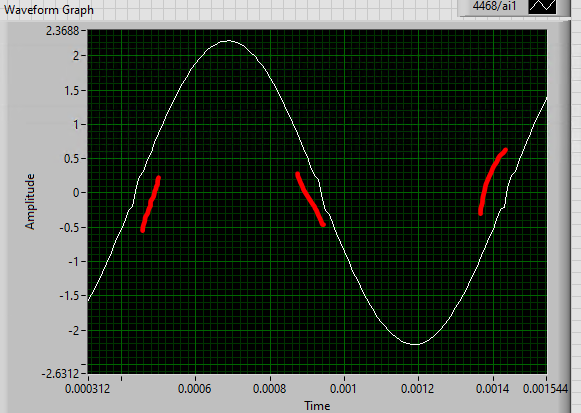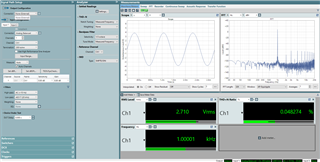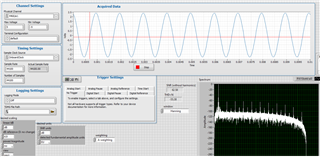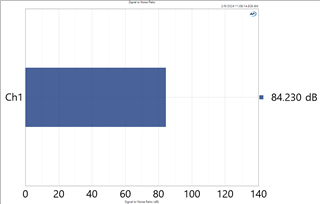Hi,
We are using TLV320DAC3101EVM-U and testing the part for different AC parameters like SNR, THD etc.
We have below 2 questions:
1) With the default configuration on GUI, the Driver gain is 24dB and Attenuation is -29.3 dB. But with full scale range of 5V, we were not getting exact output voltage but when we change attenuation to -28.1, the output is fine. Just wanted to know the rationality for this.
2) When we try to plot the FFT of the acquired signal from the Eval board, we see there are harmonics on the plot. Could you please help us on removing these harmonics or let us know what could we look for. Attached below screenshot of results in both Time domain and Frequency domain.
Let me know for more inputs.









